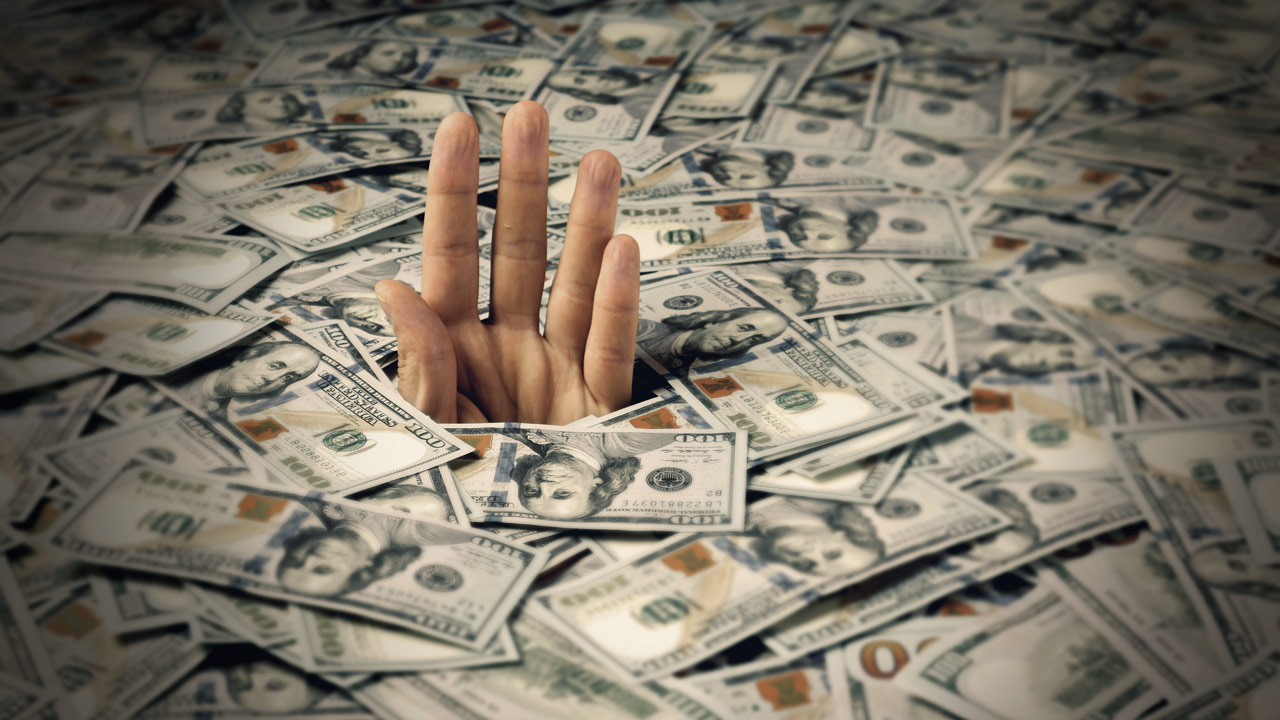Peter Schiff: The “Unsinkable” American Consumer Is Drowning in Debt | SchiffGold

Every time retail sales come in higher than expected, the mainstream media breathlessly reports this as proof that the American consumer is strong and resilient. In his podcast, Peter Schiff explained that these retail sales numbers aren’t a sign of a strong economy. They just reflect Americans paying more for less. And what’s worse, they’re burying themselves in debt to do it.
Retail sales were indeed stronger than expected in September, increasing by 0.7%. The expectation was for a 0.3% gain. Year-over-year, retail sales are up 3.8%.
The media hyped the report. CNN said it was a sign that consumers “aren’t tapping out just yet.” But Peter said the report was not actually good news.
First, it’s important to remember that retail sales data is not inflation-adjusted.
Everything costs more. Everything you buy is a lot more expensive. So, assuming that you don’t buy less, and of course, some people are buying less, but if you just buy the same stuff and everything costs a lot more, well of course, retail sales are going to go up.”
But this doesn’t indicate that the economy is thriving, and it doesn’t mean Americans are on a spending spree buying more stuff.
In many cases, they’re buying a lot less. They’re just paying more. And they’re buying fewer of the things that they want because they’re paying more to buy the things that they need.”
If you adjust the annual retail sales increase of 3.8% by the CPI, it drops to 0.1%. In other words, almost the entirety of the retail sales increase was due to rising prices. Nevertheless, the raw retail sales data creates the impression that Americans are happily spending money. Peter said you can’t necessarily draw that conclusion.
Americans aren’t happy that their grocery bill went up, and they’re probably not eating more or eating better. In fact, they’re probably trading down into lower-quality stuff. They’re just paying more.”
For instance, restaurant sales were up big. But if you’ve eaten out recently, you know the cost of everything on the menu has gone up dramatically. Even if you eat out less, you’re still spending more. Peter emphasized that none of this is a sign of a strong economy.
It is a sign of inflation. And that’s all this retail sales number is reflecting — inflation. It’s not about a strong economy, but about rising inflation.”
And we all know that actual prices are rising even faster than the CPI numbers indicate because the formula intentionally understates price inflation.
Obviously, if the government is underreporting how much prices are going up, then the retail sales are actually capturing the real increase in prices because it’s what the consumers are actually paying. It’s not what the government is pretending they’re actually paying, but what they are, in fact, paying. So, these retail sales numbers are probably a better reflection of inflation than the CPI.”
We shouldn’t celebrate this. It’s bad news. But the media keeps talking about the “unsinkable American consumer.”
He’s not unsinkable. He’s downing in debt! And the only reason he’s still floating is because he’s got two or three jobs. … This is not a report card on the success of the American economy, but on the failure. Because what it’s really measuring is the cost of living. People have to spend a lot more money to buy the same amount of stuff that they bought in the past.”
And as Peter noted, they’re buying a lot of this stuff on credit. Revolving credit – primarily credit card debt – surged by 13.9% in August. Americans now owe $1.28 trillion in revolving credit.
According to MarketWatch, “Americans appear to be relying more on debt to pay for their purchases. They are also using more ‘buy now and pay later’ plans.”
Peter pointed out that breaking down retail sales reveals the strain felt by consumers. Categories like food are up. But electronics sales are down.
[Americans] are spending more on shelter. They’re spending more on energy. They’re spending more on food. They’re spending more on insurance. They’re spending more on healthcare. They’ve got to make these expenditures. They have no choice. And the problem is when they finish buying all the things they need, they don’t have much left over for the things that they want.”
The consumer credit data reveals the same thing. While credit card spending surged in August, non-revolving credit tanked. That represents borrowing for big-ticket items. So, Americans are using credit cards to pay for the basics like food and gas, and they’re not making bigger purchases at all.
Peter goes on to explain why an economy built on consumer spending isn’t something to brag about.
Call 1-888-GOLD-160 and speak with a Precious Metals Specialist today!








